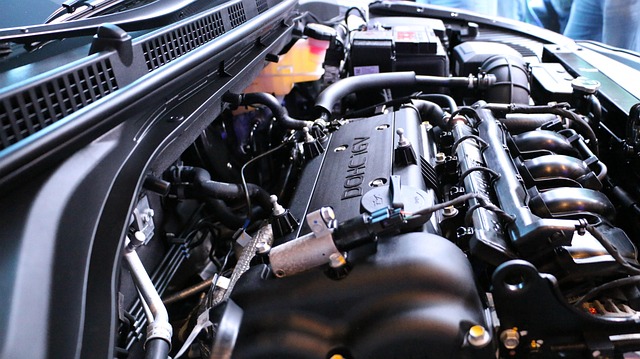Looking to register your car in California? Navigating the process can seem daunting, but we’ve got you covered. This guide breaks down the steps involved, from understanding the state’s requirements to securing your license plate. We’ll walk you through gathering essential documents, verifying your vehicle’s identity using a DMV VIN verifier, completing the registration application, and paying fees. By following these steps, you’ll be on your way to legal California car ownership in no time.
- Understanding the California Car Registration Process
- Gather Required Documents for Registration
- How to Verify a Vehicle's Identity (VIN) Using DMV Services
- Completing the Car Registration Application Form
- Paying the Registration Fees and Obtaining Your License Plate
Understanding the California Car Registration Process

In California, registering your car involves a straightforward process that ensures vehicle safety and roadworthiness. It begins with gathering essential documents, including proof of ownership, insurance, and identification. The next step is to visit or contact the Department of Motor Vehicles (DMV) to initiate the registration. Here, you’ll need to provide your vehicle’s unique Vehicle Identification Number (VIN) for verification. This process ensures that your car meets all legal requirements before it can be legally driven on California roads.
A crucial part of this procedure is the VIN inspection, which can be efficiently handled by utilizing a DMV VIN verifier or even a mobile vin inspection service. These tools cross-check the VIN with state records to validate the vehicle’s history, ensuring it has not been reported stolen and that all necessary safety standards are met. By completing these steps, California residents can ensure a smooth car registration experience while adhering to state regulations.
Gather Required Documents for Registration

Before you begin the registration process, ensure you have all the necessary documents. The California Department of Motor Vehicles (DMV) requires specific paperwork for car registration, including proof of ownership and identification. One crucial tool to facilitate this process is a DMV vin verifier, which verifies your vehicle’s unique Vehicle Identification Number (VIN). You can use a mobile vin verifier or even conduct a mobile vin inspection to make sure all the information is accurate and up-to-date.
Gathering these documents can seem daunting, but it’s essential to have them ready before visiting the DMV. This includes your vehicle registration certificate (if applicable), proof of insurance, a valid driver’s license, and identification like a passport or state-issued ID card. Additionally, you may need to present a title if you’re transferring ownership. A vin inspection ensures that all details match, streamlining the registration process for a smoother experience.
How to Verify a Vehicle's Identity (VIN) Using DMV Services

Verifying a vehicle’s identity through its unique Vehicle Identification Number (VIN) is a crucial step in the registration process. The California Department of Motor Vehicles (DMV) offers convenient services to ensure that the VIN is legitimate and matches the actual vehicle. One effective method is to utilize the DMV’s online tools, which allow you to check the VIN’s validity with just a few clicks. Simply enter your VIN into the designated field on the official DMV website; it will provide immediate feedback, confirming or alerting you of any discrepancies.
For those who prefer a more hands-on approach, the DMV also facilitates mobile VIN inspections. This service is particularly useful if you’re purchasing a used car from an individual or a dealership that isn’t close to a DMV location. With a simple call or online request, a mobile vin inspector can visit you and perform a thorough verification, ensuring peace of mind before finalizing the registration.
Completing the Car Registration Application Form

To begin the registration process for your car in California, you’ll need to complete the Car Registration Application Form, available from the DMV (Department of Motor Vehicles). This form requires a variety of details about both the vehicle and the owner, including the Vehicle Identification Number (VIN), which serves as a unique identifier for your car. Accurately entering this information is crucial, especially when using a DMV VIN verifier to ensure the vehicle’s history is clear.
When filling out the application, you can choose to do a mobile vin inspection or request a traditional vin inspection at a DMV office. Either way, ensuring the VIN is correctly recorded will expedite the registration process. Remember, an accurate and complete application helps avoid potential delays, so take your time to double-check all information before submitting it to the California DMV.
Paying the Registration Fees and Obtaining Your License Plate

After completing your vehicle’s registration application, it’s time to pay the fees associated with registering your car in California. The California Department of Motor Vehicles (DMV) charges a base fee for registration, which covers the cost of licensing and state-related services. Additional fees may apply based on factors like your vehicle’s emissions level and whether you’re trading in an old vehicle.
Once your application is approved, the DMV will arrange for you to obtain your license plate. Typically, this involves a trip to a local DMV office where you’ll need to present your registration documents, proof of insurance, and possibly other required paperwork. Some services offer the option of mobile VIN verification or a vin inspection, allowing for a smoother process, especially when done in advance. This can include receiving your license plate through mail or setting up an appointment at a designated location to pick it up.
Registering a car in California is a straightforward process that requires careful preparation. By understanding each step, gathering essential documents, and utilizing tools like a DMV VIN verifier, you can efficiently navigate the registration process. Remember to complete all forms accurately, verify your vehicle’s identity, and pay the necessary fees to obtain your license plate. With these steps, you’ll be on your way to legally registering your vehicle in California.
